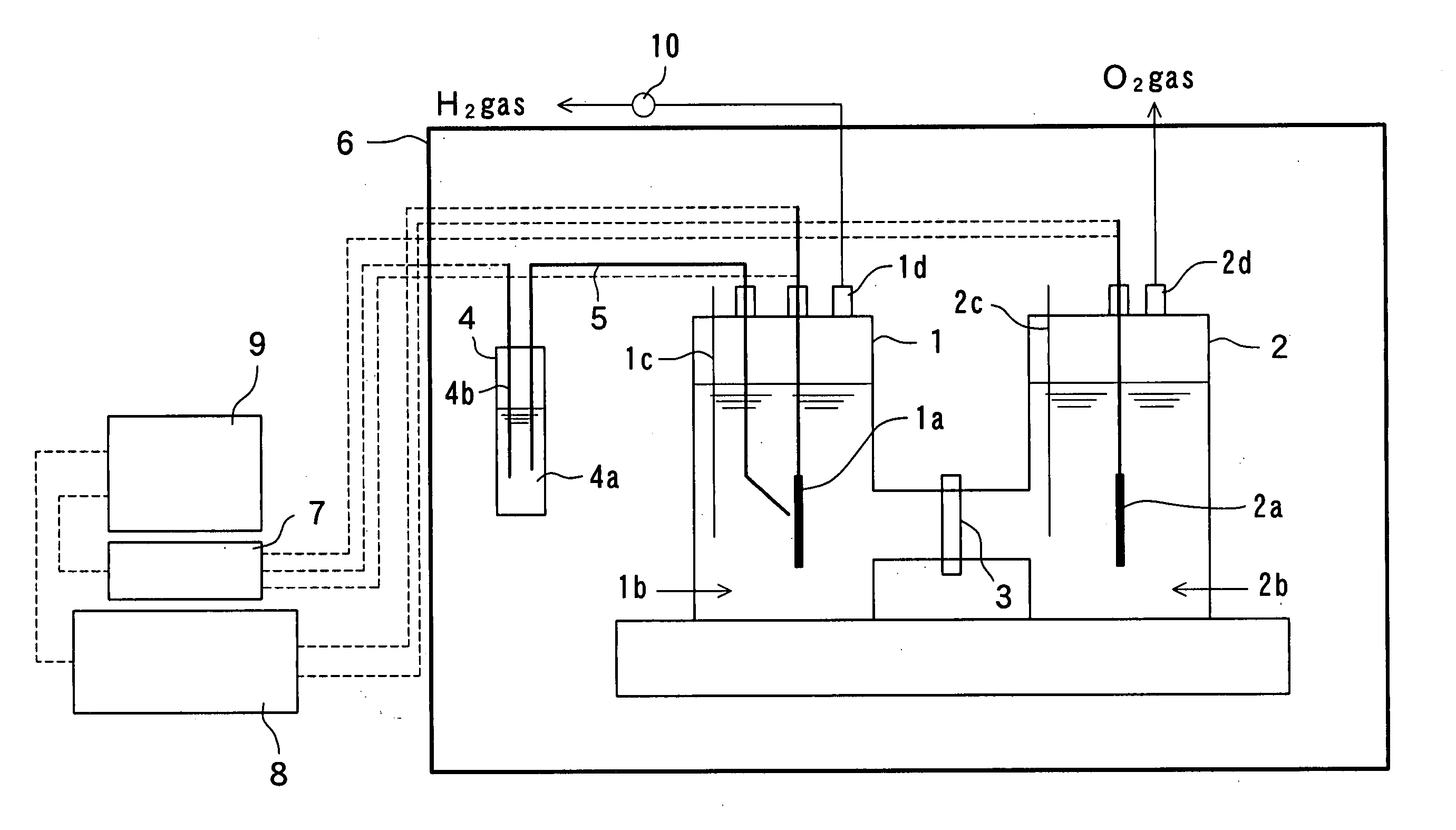Method of producing electrolytic hydrogen using rare element-deposit electrode
a rare element and electrode technology, applied in the direction of electrode coating, greenhouse gas reduction, instruments, etc., can solve the problems of stabilization of the supply and cost of platinum group elements-based catalysts utilized as catalytic electrodes, and achieve the effect of ensuring the safety of the process, simplifying the steps of catalyst production, and effectively using the electrolytic production of hydrogen
Inactive Publication Date: 2005-06-02
JAPAN ATOMIC ENERGY AGENCY INDEPENDANT ADMINISTRATIVE CORP
View PDF4 Cites 14 Cited by
- Summary
- Abstract
- Description
- Claims
- Application Information
AI Technical Summary
Benefits of technology
[0015] (1) When a nitric acid solution containing rare element FP obtained in a reprocessing step of spent nuclear fuels is subjected to electrolysis at a constant current, a catalytic electrode obtained by electrodepositing the rare element FP of Ru, Rh and Pd on a cathode can be directly utilized as it is as a catalytic electrode for electrolyzing alkaline water. Consequently, in comparison with the case where conventional methods for separating rare element FP, such as an ion exchange method and the like, are used, the step for producing a catalyst and the step for adjusting the components thereof come to be unnecessary, and thereby the simplification of the steps for producing the catalyst can be achieved.
[0016] (2) Similarly to the rare element FP, a catalytic electrode can be obtained by electrodepositing Re on a cathode through constant current electrolysis of a nitric acid solution containing Re, and the resulting catalytic electrode can be effectively used for electrolytic production of hydrogen.
[0017] (3) Both the production of a catalytic electrode in which Ru, Rh, Pd and Re are electrodeposited and the el
Problems solved by technology
Further, in the hydrogen production method using electrolysis of alkaline water, the stabilization of the supply and cost of the platinum group elements-based catalysts utilized as a
Method used
the structure of the environmentally friendly knitted fabric provided by the present invention; figure 2 Flow chart of the yarn wrapping machine for environmentally friendly knitted fabrics and storage devices; image 3 Is the parameter map of the yarn covering machine
View moreImage
Smart Image Click on the blue labels to locate them in the text.
Smart ImageViewing Examples
Examples
Experimental program
Comparison scheme
Effect test
 Login to View More
Login to View More PUM
 Login to View More
Login to View More Abstract
A nitric acid solution containing ions of any one element selected from the group consisting of rare element FP of Ru, Rh and Pd and a rare element of Re is electrolytically reduced by electrolyzing at a constant current to thereby deposit the ions of the element on an electrode. Alternatively, a nitric acid solution containing ions of two or more elements selected from the group consisting of rare element FP of Ru, Rh and Pd and a rare element of Re is electrolytically reduced by electrolyzing at a constant current to thereby collectively deposit the ions of the elements on an electrode. Alkaline water is electrolyzed by using the thus obtained electrodeposit electrode directly as it is as a catalytic electrode to efficiently generate hydrogen. Thus, a clean and sustaining energy system integrating the nuclear energy with the fuel cell power generation is provided.
Description
FIELD OF THE INVENTION [0001] The present invention relates to an electrolytic hydrogen production method which can effectively utilize, as a catalyst, rare element fission products (FP) contained in spent nuclear fuels such as ruthenium (Ru), rhodium (Rh) and palladium (Pd), and a rare element, rhenium (Re), which is not FP. BACKGROUND OF THE INVENTION [0002] In nitric acid solutions and radioactive process liquid wastes generated from reprocessing plants for spent nuclear fuels used in light water reactors and fast reactors, useful FP of rare elements such as platinum group elements of Ru, Rh and Pd are contained. Such rare element FP are high in catalytic activity, and demand for such rare element FP is expected to be increased as electrode materials for fuel cells and as catalysts for producing and purifying fuel hydrogen. [0003] As a technique for separating and recovering such rare element FP from nitric acid solutions containing rare element FP generated from a reprocessing s...
Claims
the structure of the environmentally friendly knitted fabric provided by the present invention; figure 2 Flow chart of the yarn wrapping machine for environmentally friendly knitted fabrics and storage devices; image 3 Is the parameter map of the yarn covering machine
Login to View More Application Information
Patent Timeline
 Login to View More
Login to View More IPC IPC(8): G21C19/46C25B1/04C25B11/04C25B11/08C25C1/20C25C1/22
CPCC25B1/04C25B11/0473Y02E70/20Y02E60/366Y02E70/10C25B11/0494C25B11/081C25B11/097Y02E60/36Y02E60/50
Inventor OZAWA, MASAKIIKEGAMI, TETSUO
Owner JAPAN ATOMIC ENERGY AGENCY INDEPENDANT ADMINISTRATIVE CORP
Features
- R&D
- Intellectual Property
- Life Sciences
- Materials
- Tech Scout
Why Patsnap Eureka
- Unparalleled Data Quality
- Higher Quality Content
- 60% Fewer Hallucinations
Social media
Patsnap Eureka Blog
Learn More Browse by: Latest US Patents, China's latest patents, Technical Efficacy Thesaurus, Application Domain, Technology Topic, Popular Technical Reports.
© 2025 PatSnap. All rights reserved.Legal|Privacy policy|Modern Slavery Act Transparency Statement|Sitemap|About US| Contact US: help@patsnap.com


